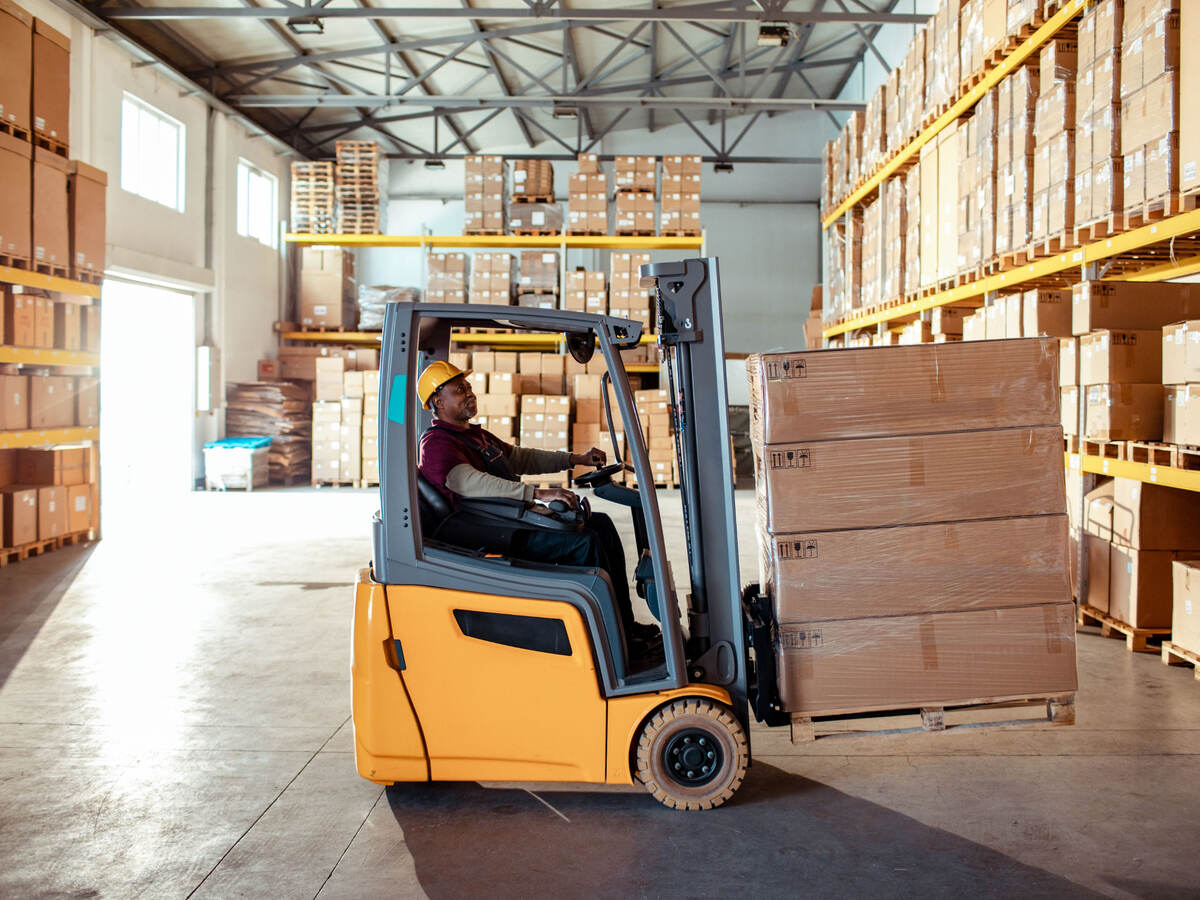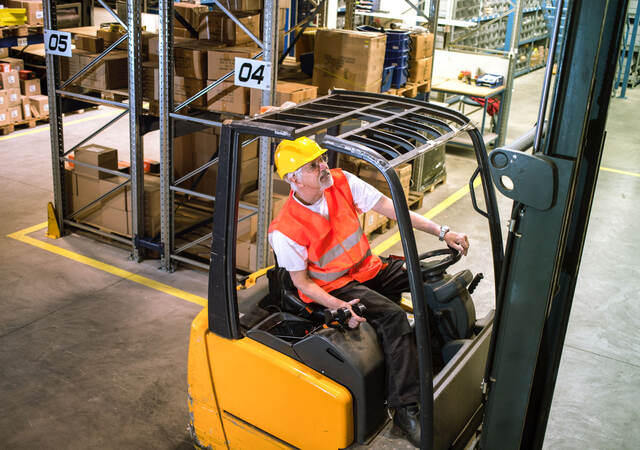August 3, 2022
Safety First: Forklift-Pedestrian Awareness
Forklifts are among the most useful and valuable powered industrial trucks. Every day, in all parts of the world, they are used to lift and move equipment or materials in the workplace. Forklifts are indispensable machines in manufacturing and warehousing, but the qualities that make them useful — their strength, agility and mobility — are also the qualities that make them hazardous to workers near them on the floor. To lift and move a cargo of several thousand pounds, forklifts must be heavy and strong and very solidly constructed. When the machines are maneuvering on the floor of the factory, dock or warehouse, safety measures must be taken to protect the relatively frail human bodies walking and working nearby.
Forklifts come in different classes, everything from standard fork trucks to motorized hand trucks and tractors, and each one of them may present a hazard to pedestrians. If any part of a forklift — from the forks to the wheels to the counterbalance or the payload — makes contact with a person, the person can be seriously harmed. In fact, forklifts rank among the leading causes of machine-related deaths in the workplace. Because of this risk of serious injury or death, forklift safety training is imperative.
At UL Solutions, our Environmental Health and Safety (EHS) training includes forklift and warehouse safety courses that have been developed specifically for forklift operators and supervisors as well as any workers who may encounter forklifts while on the job. UL Solutions forklift safety courses can help employers meet standards of the United States Occupational Safety and Health Administration (OSHA) as well as ANSI/ITSDF Standard B56.1-2020: Safety Standard for Low, High Lift Trucks. Our courses focus on forklift pedestrian safety measures and right-of-way as well as:
- The most common causes of forklift injuries and fatalities
- The key elements for safe operation of a forklift, including stability and load handling
- The most important considerations for stopping a lift and/or ending a shift
Keeping workers safe is a top priority, and UL Solutions is here to help. To learn more, see our EHS course list and our booklet on Powered Industrial Truck Safety & Training. But for now, we provide this abbreviated checklist of forklift-pedestrian safety tips:
Pedestrians
- Use designated pedestrian paths and stay behind guard rails where available.
- Avoid shortcuts through vision-obscuring equipment or stacked material.
- Be aware of such floor hazards as water, sawdust, grime or grease that may affect a forklift’s ability to stop or maneuver safely.
- Maintain a safe distance from all operating industrial powered trucks.
Forklift operators
- Reduce speed in dimly lit or congested areas.
- Be aware of and report hazardous floor conditions.
- Follow general stability principles to maintain optimum control.
- Avoid quickly accelerating or braking.
- Sound the horn when approaching aisles, corners or blind crossings and when changing direction.
- Pedestrians always have the right-of-way.
Employers
- Restrict non-essential personnel from warehouses and other high traffic areas.
- Require the use of high-visibility or reflective vests.
- Ensure all employees — not just operators — are trained on the hazards of forklifts and other powered industrial trucks.
- Keep floors and equipment clean and in good operating condition.
- Ensure all areas are well lit.
- Mark clear pedestrian paths and install guardrails where needed.
- Require the reporting of all incidents or safety issues, and act on those reports.
Get connected with our sales team
Thanks for your interest in our products and services. Let's collect some information so we can connect you with the right person.


